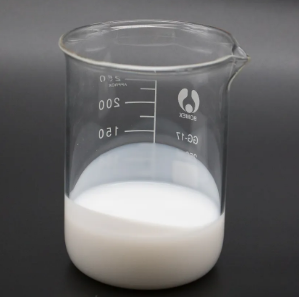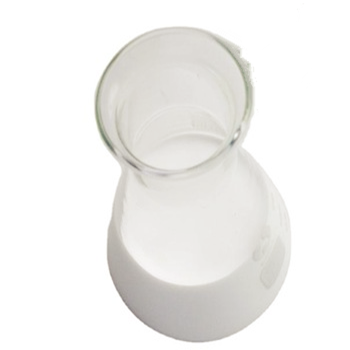Introduction to Water-Based Zinc Stearate: Bridging Performance and Sustainability in Modern Production
Water-based zinc stearate is an environmentally friendly alternative to solvent-based lubricants and release agents, supplying remarkable efficiency with marginal ecological effect. As markets change toward greener production methods, this aqueous dispersion of zinc stearate has actually gained prestige across sectors such as rubber processing, metal developing, concrete spreading, and polymer manufacturing. Its capability to give reliable lubrication, stop attachment, and lower surface area problems makes it a flexible device in modern-day industrial applications. With expanding regulative pressure on unpredictable organic compound (VOC) discharges, water-based zinc stearate stands apart as a tidy, reliable, and scalable option.
(TRUNNANO Water Based Zinc Stearate)
Chemical Structure and Functional Mechanism
Zinc stearate is a metallic soap formed by the reaction of stearic acid with zinc oxide or zinc salts. In its water-based formula, it is typically spread using surfactants or emulsifiers to make certain stability and uniform application. When put on surfaces, the zinc stearate fragments create a slim, hydrophobic film that reduces friction and stops straight get in touch with between products. This mechanism is important in mold launch operations, where it helps with very easy demolding without harming the end product’s surface area stability. Furthermore, its high melting point (~ 120– 130 ° C) enables it to do successfully under modest thermal problems, preserving functionality during high-temperature processes.
Applications in Rubber and Polymer Handling
In rubber manufacturing, water-based zinc stearate serves double purposes– as a mold and mildew launch agent and as an inner lubricant. It protects against sticking in between uncured rubber compounds and mold surface areas, making certain consistent part top quality and reducing post-processing initiatives. In thermoplastics and elastomers, it enhances circulation properties throughout extrusion and shot molding, reducing die accumulation and improving surface coating. Its compatibility with various polymers, including polyolefins, PVC, and engineering resins, better expands its energy. Furthermore, its non-reactive nature guarantees it does not conflict with curing or vulcanization reactions, protecting product performance attributes.
Function in Metal Forming and Stamping Industries
The metalworking market progressively depends on water-based zinc stearate for chilly and warm forming operations. Utilized as a lubricating substance in stamping, drawing, and creating, it creates a protective border layer that decreases tool wear and enhances part surface high quality. Contrasted to oil-based or wax layers, it uses much better warmth dissipation and cleaner procedure, which is especially useful in automatic assembly line. Furthermore, its convenience of removal after processing– using straightforward water rinsing or moderate cleaning agents– lowers cleansing prices and prevents deposit build-up on finished components. This makes it perfect for use in automotive, aerospace, and accuracy element production.
Use in Concrete and Construction Materials
Within the building market, water-based zinc stearate is extensively used as an internal launch representative for precast concrete aspects. Unlike typical oil-based products, it does not tarnish surface areas or interfere with second therapies like paint or finish. When blended into concrete or applied to formwork, it prevents bonding between the mold and the hardened concrete, enabling easy demolding while maintaining dimensional accuracy. Its low viscosity makes it possible for even coverage through splashing or brushing, making it appropriate for both hands-on and mechanical operations. In addition, it adds to longer mold and mildew life by protecting against chemical attack and abrasion from duplicated casting cycles.
Environmental and Security Advantages Over Traditional Alternatives
One of the most engaging advantages of water-based zinc stearate is its ecological profile. Free from solvents, VOCs, and toxic additives, it aligns with worldwide sustainability objectives and occupational wellness requirements. Employees benefit from minimized exposure to combustible or damaging substances, and suppliers can meet rigorous air top quality regulations without added air flow systems. From a waste management perspective, water-based solutions are much easier to take care of and get rid of securely, sustaining round economy practices. These attributes make it a preferred option for companies aiming to accomplish eco-friendly accreditations such as ISO 14001 or LEED conformity.
Market Trends and Technological Innovations
( TRUNNANO Water Based Zinc Stearate )
The market for water-based zinc stearate is experiencing stable growth, driven by enhancing demand for eco-friendly industrial solutions and more stringent ecological regulation. Suppliers are buying advanced dispersion innovations to boost stability, expand service life, and boost performance under severe problems. Innovations such as nano-dispersed zinc stearate and crossbreed formulations with silicone or PTFE are being explored to supply premium lubricity and temperature level resistance. Additionally, clever shipment systems– consisting of atomized sprays and dosing systems incorporated with IoT– are enabling exact application control, minimizing usage and functional prices.
Difficulties and Ongoing Research Study Instructions
Despite its advantages, water-based zinc stearate deals with certain constraints, consisting of level of sensitivity to water firmness, prospective microbial deterioration, and reduced load-bearing capacity contrasted to synthetic lubricants. To resolve these issues, recurring research study focuses on enhancing emulsion stability, including biocides for microbial resistance, and improving useful efficiency with additive synergies. Compatibility with different substratums and process problems likewise stays an essential location of advancement. Efforts are underway to customize solutions for specific applications, making sure consistent efficiency throughout varied industrial environments.
Future Potential Customers: Integration with Smart Production and Green Chemistry
Looking ahead, water-based zinc stearate is positioned to play a central function in the change towards intelligent and sustainable manufacturing. Its combination with Industry 4.0 technologies– such as real-time surveillance, predictive upkeep, and automated dispensing– will enable much more reliable and adaptive production process. Advances in bio-based surfactants and eco-friendly feedstocks will certainly additionally boost its environmental credentials, supporting decarbonization strategies throughout supply chains. As markets remain to focus on resource performance and environmental stewardship, water-based zinc stearate represents a critical advancement that stabilizes technological performance with eco-friendly duty.
Vendor
TRUNNANO is a supplier of water based zinc stearate with over 12 years of experience in nano-building energy conservation and nanotechnology development. It accepts payment via Credit Card, T/T, West Union and Paypal. Trunnano will ship the goods to customers overseas through FedEx, DHL, by air, or by sea. If you want to know more about zinc stearate release agent, please feel free to contact us and send an inquiry(sales5@nanotrun.com).
Tags: water based zinc stearate, zinc stearate, zn stearate
All articles and pictures are from the Internet. If there are any copyright issues, please contact us in time to delete.
Inquiry us


